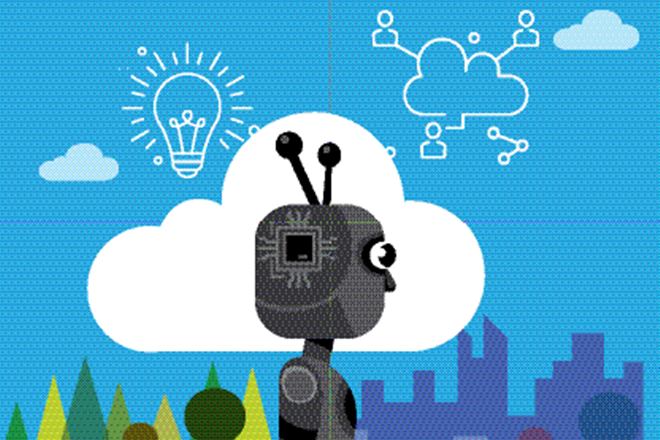By Rishi Bhatnagar & TV Ramachandran
India is witnessing a phenomenal growth in internet of things (IoT). The adoption of IoT gained momentum when the Digital India mission was launched in 2015 followed by the 100 Smart Cities Mission in 2016. The Centre announced in the New National Digital Communications Policy 2018 that, as part of its Propel India vision to have a $1 trillion digital economy by 2022, India would take a number of steps, including reaching an estimated 5 billion IoT connections by that timeframe. But much needs to be done to meet the ambitious targets set for 2022; the Union Budget offers a golden opportunity to effect this.
IoT transforms connected objects into “intelligent” products that have the ability to interact with their environment, other products/objects, people and applications. Specific use-cases or applications of IoT include smart cities, connected vehicles, smart grids, smart metres, smart homes, connected health , etc. The inherent complexity in connecting various devices, products, sensors, proprietary solutions, and platforms, etc, requires an ecosystem of device OEMs, technologists, connectivity providers, network and data scientists, platform and solution providers, system integrators, app developers and vertical and domain experts, along with security specialists. Government plays a crucial role in this ecosystem development by creating a favourable policy and regulatory environment, giving equal opportunity to both big and small players.
While government incentivisation with Make-in-India and Digital India has empowered the technology sector, a lot more needs to be done in terms of recognising and incentivising the efforts of the other parts of the digital ecosystem. Specialised IoT R&D centres will help develop new innovative sensors, devices, long-lasting and weather resistant batteries that are tailored to Indian requirements. Likewise, IoT start-ups and solution-providers producing solutions specifically for the Indian market need to be recognised and given adequate attention so that they can scale and grow big enough and self-sustainable. A focus on skills development for IoT, AI, machine learning, blockchain and other emerging technologies can bring us to the forefront of the fourth industrial revolution.
The National Digital Communication Policy (NDCP) 2018 has recognised the need to rationalise levies in the telecom sector including licence fees, Spectrum Usage Charges, etc. This, once implemented, will go a long way towards providing the necessary incentive to the existing operators as well as the new breed of service providers. As demand for 4G and 5G increases with greater adoption of IoT, networks will become denser and deeper, making the fibre-isation of telecom towers imperative. The same has been recognised in the NDCP through several initiatives such as the Fibre First initiative, creation of a National Fibre Authority and the vision to connect 60% of all towers with fibre and 50% of households. Fibre to home would account for a majority of the fixed broadband connections by 2022.
5G-IoT is considered as the frontier that can improve our lives in many aspects and is set to transform our world completely. It is still at a nascent stage in India, but is increasing in importance for the government, corporate and regulators. The government has declared its intent regarding promotion of 5G-IoT through the NDCP, 2018. For IoT services to be deployed at scale, efficiently, 5G infrastructure is considered absolutely essential. These include improved network speeds and capacity, reduced communication latency and flexible service delivery models. The long-term vision, including massive Machine Type Communications and Ultra-reliable & Low Latency Communications, is quite exciting. Some of the key industrial verticals where 5G is likely to make a huge impact are in the areas of automotive, industrial and healthcare. For city planners, 5G’s massive IoT capabilities will build on existing mobile IoT services but enable far more devices to be connected by area and offer cost and energy savings. 5G will continue to improve on low power capabilities and allow operation in both licenced and unlicenced spectrum.
The momentum towards achieving 5G-enabled IoT needs serious consideration on interoperability between IoT solutions. All major standardisation bodies have established working groups dedicated to this goal.Despite there being several models of standards development, such as the proprietary- and government-led models, collaborative standards development has held a superior position. Building an application ecosystem, preparing the network infrastructure and establishing strategic partnerships are essential to helping develop sustainable business models for 5G-enabled IoT services.
The government has already taken the right steps by initiating well thought-out and forward-looking reforms through the new NDCP. It needs to now fast track the implementation of the policy, get all the stakeholders on board and take the country forward to unleash countless business opportunities, thereby leading the industry to its next level of transformation. Realising the great importance of 5G for Digital India, the Centre made a landmark announcement in the last Budget of a significant financial allocation for 5G. It needs to do the same for IoT incentivisation in India. Given the right support, India could well become a world leader in IoT.
-Bhatnagar is president of Aeris Technologies India Pvt Ltd and Ramachandran is president of Broadband India Forum. Views are personal


